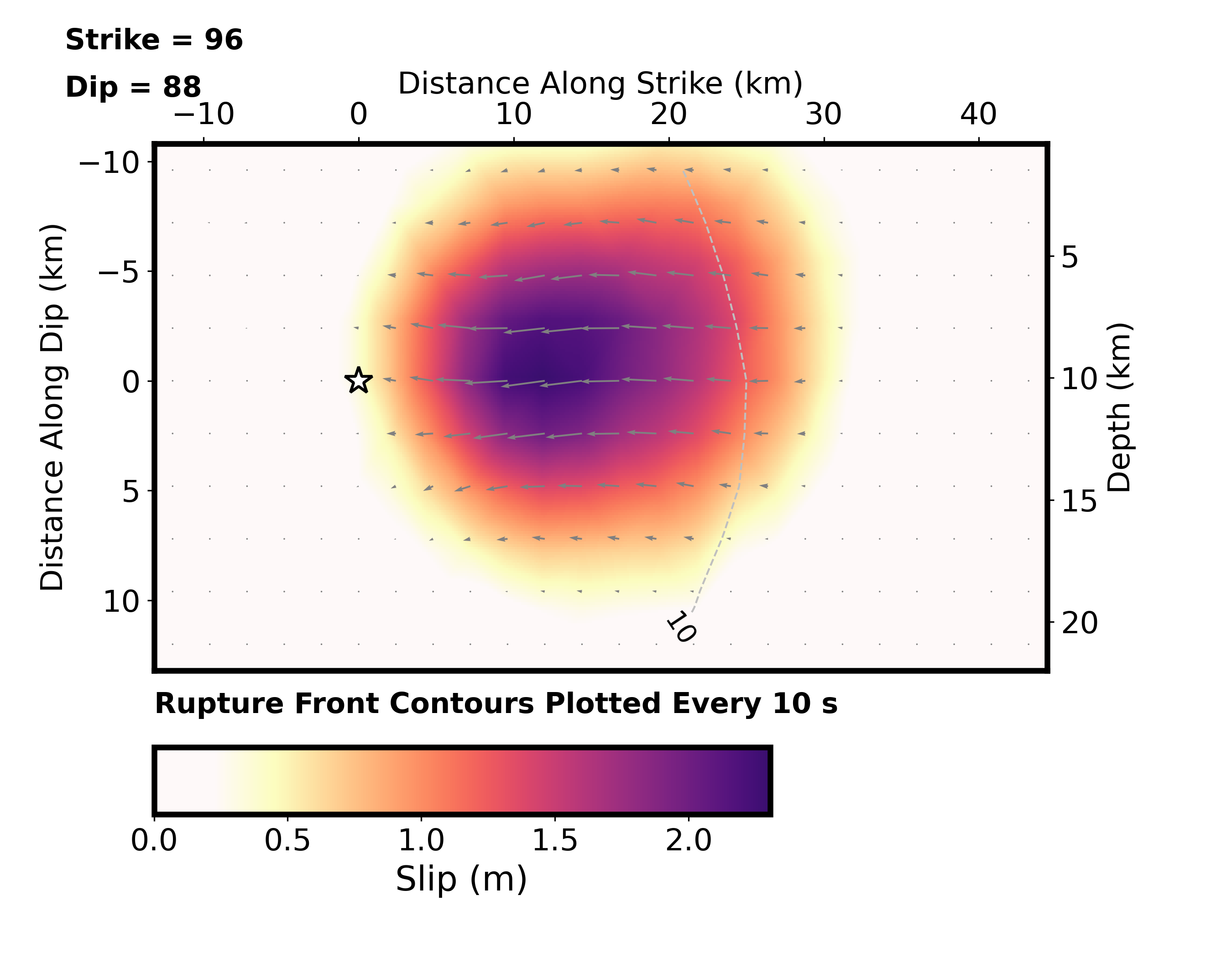M 7.0 - 2024 Offshore Cape Mendocino, California Earthquake
- 2024-12-05 18:44:21 (UTC)
- 40.374°N 125.022°W
- 10.0 km depth
Finite Fault
- The data below are the most preferred data available
- The data below have been reviewed by a scientist
Scientific Analysis
This model includes analysis of both teleseismic and regional observations, including from 7 high-rate GNSS stations processed by Central Washington University (Melbourne et al., 2021) and 23 static GNSS stations (processed by USGS). Local observations are modeled using a 1D crustal velocity model from Castillo & Ellsworth (1993). Difficulty fitting the body wave observations included in this model, in particular the P wave arrivals, suggests some greater rupture complexity not considered in this model.
Castillo & Ellsworth. Seismotectonics of the San Andreas Fault System between Point Arena and Cape Mendocino in northern California: implications for the development and evolution of a young transform. Journal of Geophysical Researsearch Solid Earth 98, 6543–6560 (1993).
Melbourne et al. Global Navigational Satellite System Seismic Monitoring. Bulletin of the Seismological Society of America 2021; 111 (3): 1248–1262. doi: https://doi.org/10.1785/0120200356
Data Process and Inversion
We analyzed 32 teleseismic broadband P waveforms, 23 broadband SH waveforms, and 42 long period surface waves selected based on data quality and azimuthal distribution. Waveforms are first converted to displacement by removing the instrument response and are then used to constrain the slip history using a finite fault inverse algorithm (Ji et al., 2002). We begin modeling using a hypocenter matching or adjusted slightly from the initial NEIC solution ( location = 40.4°N, 125.0°W; depth = 10.0 km ), and a fault plane defined using either the rapid W-Phase moment tensor (for near-real time solutions), or the gCMT moment tensor (for historic solutions).
Result
This result is based on the moment tensor nodal plane ( strike = 96.0°; dip = 88.0° ). The seismic moment release based upon this plane is 3.7e+19 N-m (Mw = 7.0) using a 1D crustal model interpolated from CRUST2.0 (Bassin et al., 2000).
Cross-section of Slip Distribution

Surface Projection

Moment Rate Function


